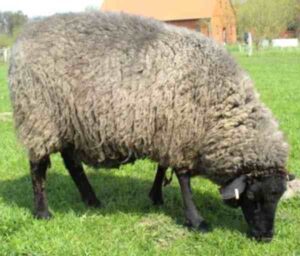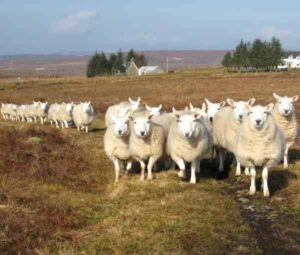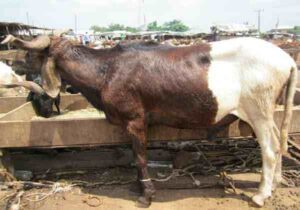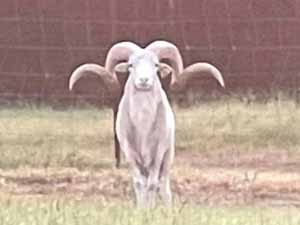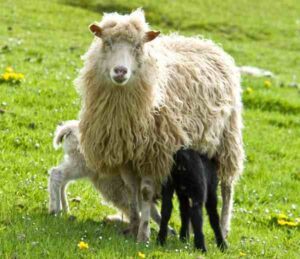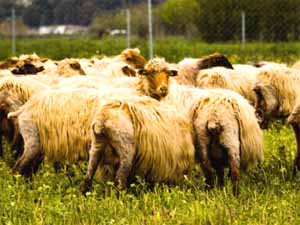The Shropshire sheep is a dual purpose breed of domestic sheep from United Kingdom. It was originated from the hills of Shropshire, and North Staffordshire, England.
It was developed during the 1840s. Exact origins of this breed are unknown. But the breeders in this area used the local black-faced sheep and crossed them with a few sheep breeds of white-faced sheep, especially the Cotswold, Leicester and Southdown sheep.
That cross produced a medium-sized sheep breed that produced good wool and meat. The Shropshire sheep was imported into the United States, in 1855. And currently the breed is raised mainly for meat production.
The Shropshire sheep gained rapid popularity after it’s development. It was first exhibited in a special class for short-wooled sheep breed at the Royal Show in Gloucester in the year of 1833.
And the breed was awarded a place on the prize sheet of the Royal Agricultural Society in 1859 as a recognized and distinct breed.
The breed is a member of the Downs family of sheep and one of the few black-faced sheep on the Conservation Priority List.
The American Shropshire Registry was founded in the year of 1884. However, read some more information about this breed below.
Shropshire Sheep Characteristics
The Shropshire sheep is a medium to large sized breed with stylish carriage. It’s body is covered with fine and dense wool.
It is a robust animal as indicated by width and depth of the chest, strength and formation of neck and by bold active movement. Fleece of these animals is of good length, dense and elastic to touch.
The fleece is medium fine, free from black fiber and well crimped. Their skin is of a light cherry color, clear and free from dark spots.
Body of the Shropshire sheep is well fleshed, long, deep and symmetrical. Their shoulder is strong, smooth and blending well into body.
Their head is short and broad between the ears and eyes. The head is bold and masculine in rams, without horns.
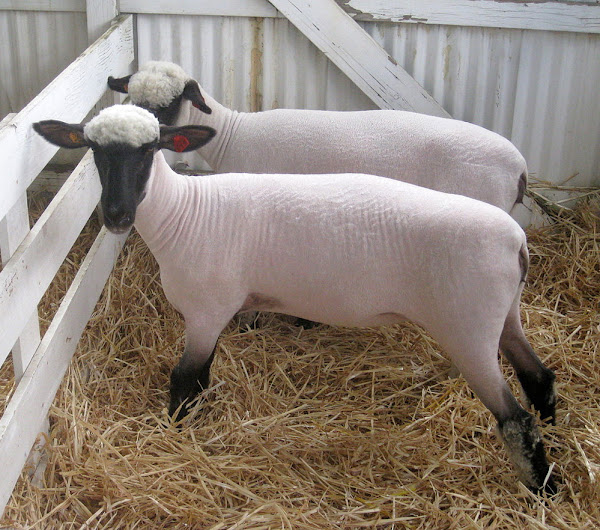
Their face is straight or slightly dished. Their neck is short, strong and muscular, especially in rams.
Ears of the Shropshire sheep are short, alert and well set. The ears are not upright, but perpendicular to head.
The ears are of moderate thickness, and the color is same as the face and legs. Their legs are short but strong and well wooled and well set apart.
The leg’s hair is usually of dark chocolate brown color (although this can be of other colors).
As a medium sized animal, average live body weight of the mature Shropshire sheep vary from 68 to 114 kg. Photo and info from Wikipedia.
Uses
The Shropshire sheep are dual purpose animals. They are raised for both meat and wool production.
Special Notes
The Shropshire sheep are very alert and active animals with a very attractive appearance. They are actually a productive and useful dual-purpose animal.
They are relatively calm in temperament and it’s very easy to care for them. They are feed efficient and gain weight well.
They are a prolific breed, and are known for easy lambing. Due to the gentle disposition of these animals, they are a very good choice for youth projects.
Wool of the Shropshire sheep is of good quality, and the wool has a fiber diameter of 24.5 to 33 microns and a staple length from 2.5 to 4 inches.
Like all the downs sheep, this medium-grade wool has a springy quality that makes it perfect for hard wearing items such as hats, mittens and socks.
However, review full breed profile of the Shropshire sheep in the following chart.
| Breed Name | Shropshire |
| Other Name | None |
| Breed Purpose | Meat, wool |
| Special Notes | Very hardy and alert animals, attractive appearance, dual-purpose animals, good for both meat and wool production, relatively calm in temperament, very easy to care the animals, feed efficient and grain weight well, prolific, known for easy lambing, good choice for youth projects, good quality wool |
| Breed Size | Medium to large |
| Weight | Vary from 68 to 114 kg |
| Horns | Polled |
| Climate Tolerance | Native climates |
| Color | White |
| Rarity | Common |
| Country/Place of Origin | United Kingdom |

